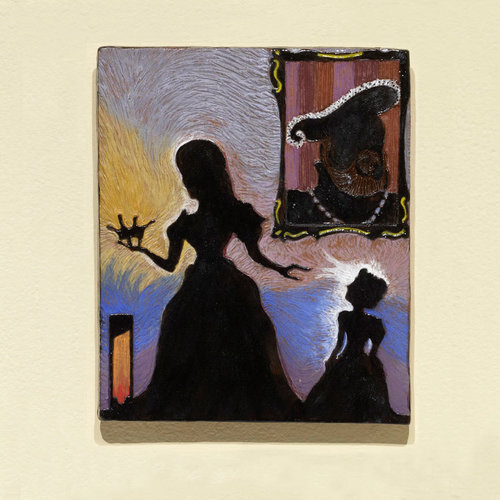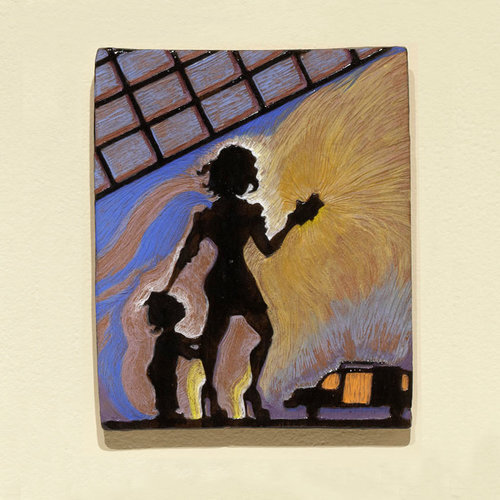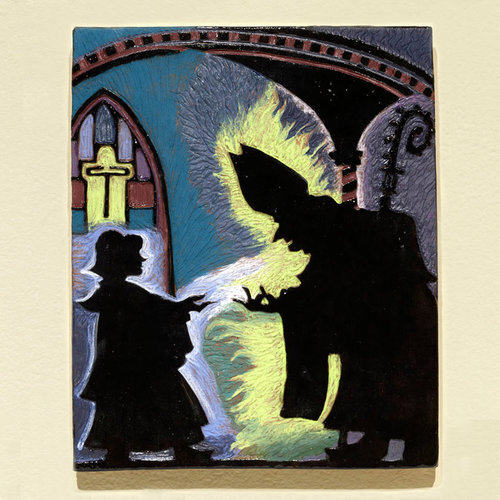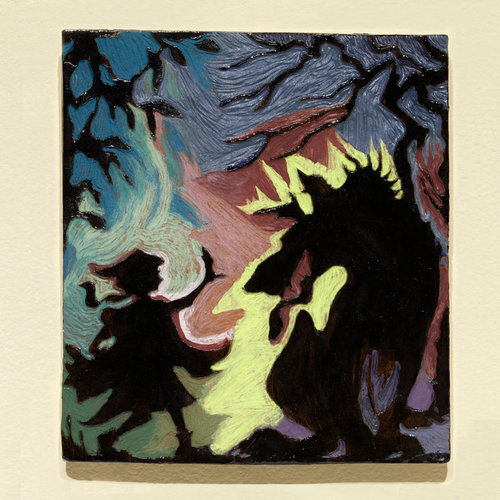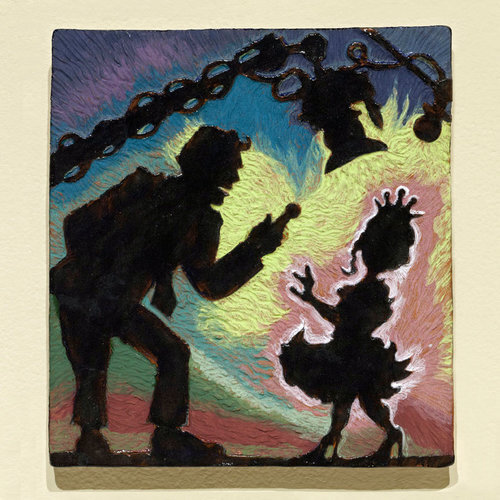Dawn creating an ouroboros serpent from mosaic tiles at the Northern Clay Center
I talk a lot about storytelling in my art. When I’m developing a project there are many ideas that swirl through my head, but the ones I find interesting bring a story. The question is not only how to tell that story, but where. Tiles are little stages where poetry and drama and comedy and farce can find a perceptive mind. They can emote from a backsplash, or a fireplace or a recess in a stairwell. They can retell a great myth or fairy tale on a wall or across a floor or even on a ceiling. They can stand on their own, like 2-D art, with more depth. I love creating imagery across multiple tiles of varied size and shape. Bright bold colors, grouted lines and shards of ceramic pixels all coalesce to pique interest and relate a once-upon-a-time.
“I’m amazed by the one-of-a-kind tiles Dawn has created for me, and can’t wait for her to build and install a custom back-splash in my kitchen!”
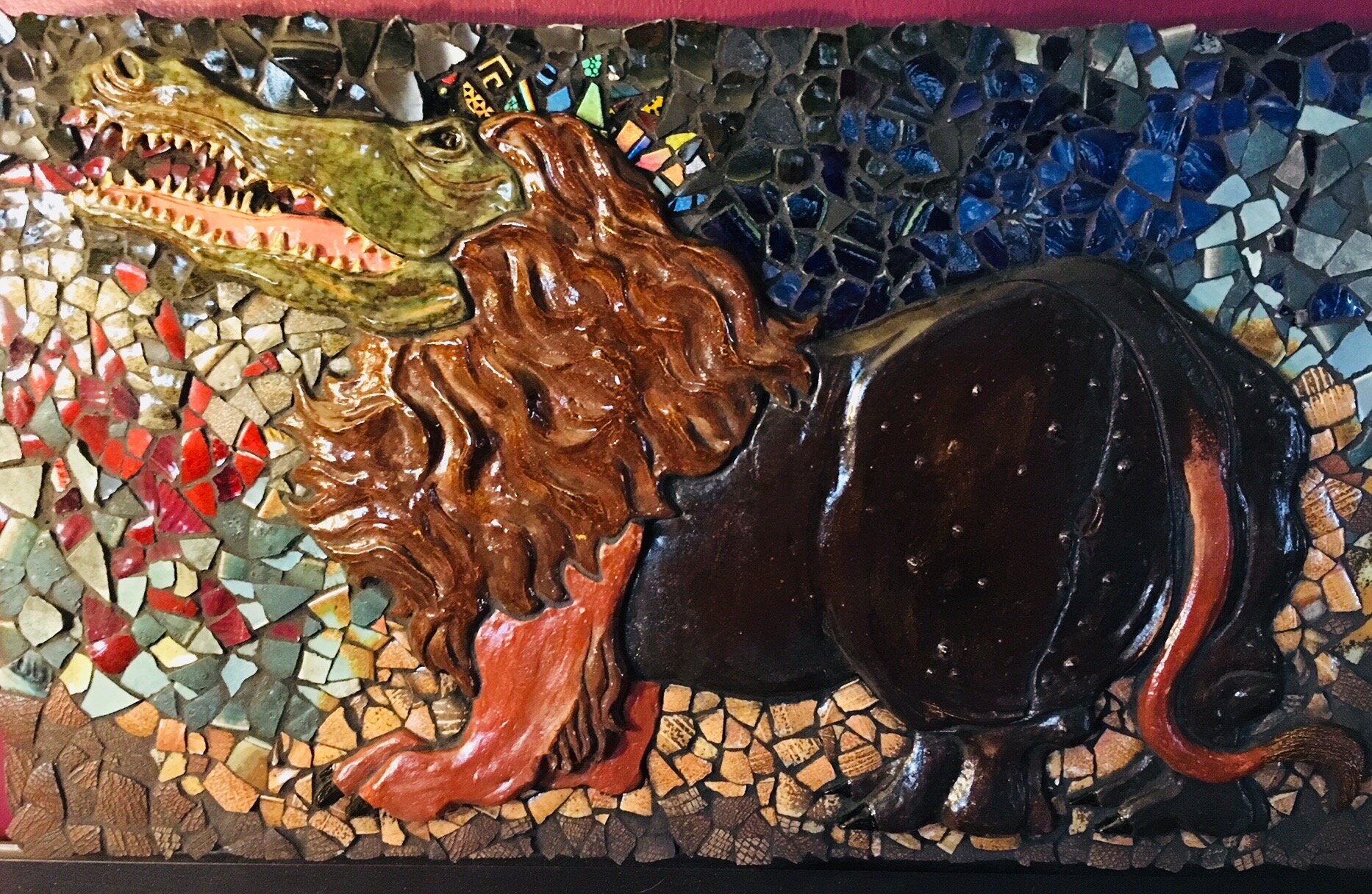

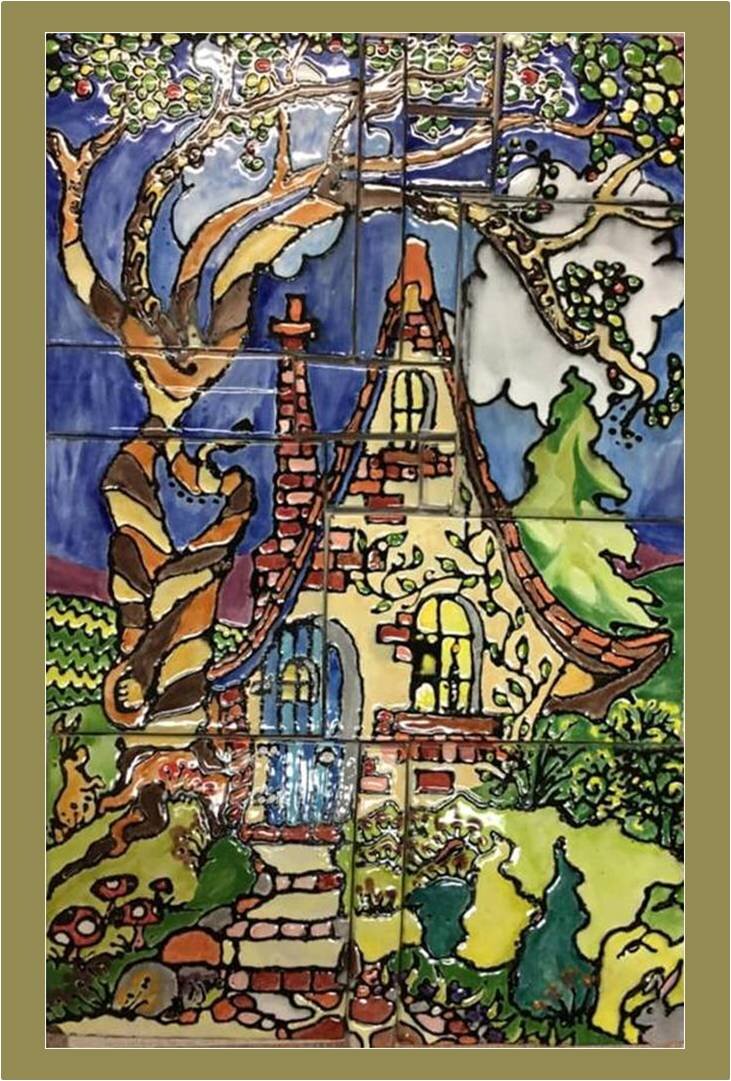
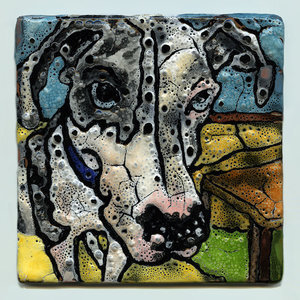

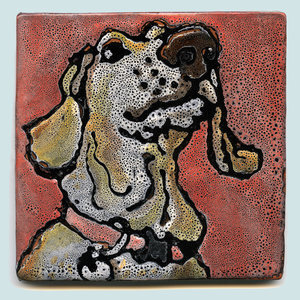

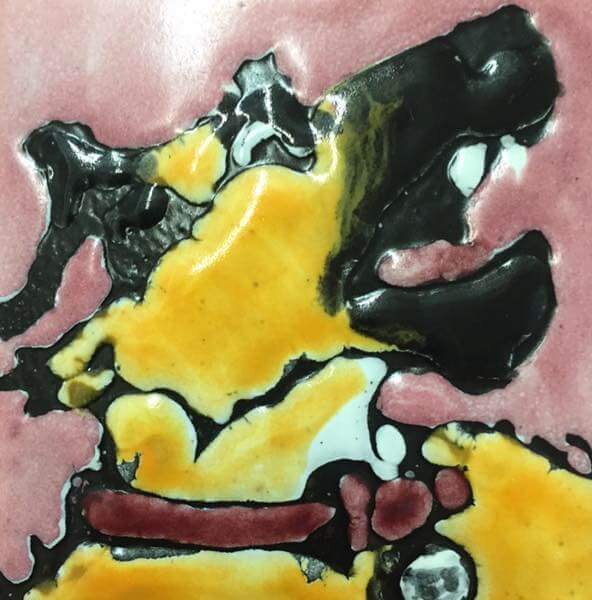
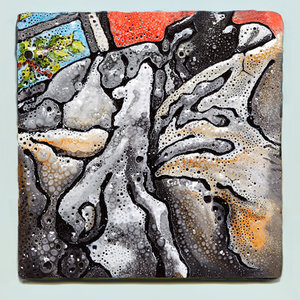
featured tile art
THE FAIRY TILE SERIES
Fairy tales introduce children to archetypal imagery and culturally reinforced lessons, even as they masquerade as simple entertainment. Iconic characters, heroes and villains, are unwittingly thrown into circumstances fraught with choices and magic that test their mettle. Fantastic exploits help readers/listeners recognize their own fears, desires, values and place in the world. In creating my Fairy Tiles, I examined the underlying themes of three well-known tales and imagined how each of their themes could be brought forward on the timeline of human history. Greed, subjugation and predation are as ancient as people gathering around a fire, and as recent as your last office party.
materials: terra cotta clay with low-fire glazes
dimensions: Set: 24”x 8”x.5” Tiles: 8”x 6”x.5”
Hero Thieves is inspired by a question I first encountered through a program called Junior Great Books: “Why was it okay for Jack to steal the Giant’s gold?” Why indeed? Why are Jack and the likes of Hernan Cortez and the financial wizards of Wall Street seen as cultural heroes? Who asks for justice for the Giant, the raped peoples of the New World, and the 860,000 families who lost their homes to foreclosure in the first year of our nation’s last financial debacle? They did not live happily ever after.
Cinderella Complicated examines the elements of power in the grasp of the “gentler sex.” Cinderella had her rightful place in Fairyland stripped away through injustice. She suffered but was eventually restored to the aristocracy through magic, love her beauty inspired in a prince, and a foot too small to hang onto its glass slipper. In Anne Boleyn, we see the fairy tale through a grimmer glass, and today’s single mom stands on her own, trying to create the magic without a fairy godmother or a royal husband, but under a ceiling of glass.
Wolf in the Woods begins with the adventure of a girl in a red hooded cape on her way to bring food to her sick granny. She is approached and enticed by a large furry stranger who professes to be her friend, but whom she rightly identifies as a threat. Alas, the guile and persistence of the wolf is more than Red, or the unfortunate altar boy, or the preadolescent nymphet can defend against, and so they are seen here with fear dawning. The advent of the Catholic priest scandals and a thriving “Toddlers & Tiaras” culture proves that the wolf is abroad, and perhaps the Huntsman is unconcerned.
“THE ALL IS ONE” MOSAIC TILE ART
The ouroboros is an ancient symbol—a serpent or dragon curled, with its tail near or in its mouth. It represents Nature’s infinite cycle of life and death. It was adopted as a sigil of medieval alchemy, symbolizing introspection and transmogrification, something constantly reinventing itself.
I first encountered the ouroboros in Norse mythology, in the story of Loki’s monstrous children, by the giantess Angrboda. Odin banishes all three upon receiving a prophecy that they will bring the doom of Asgard at Ragnorok. Fenrir, the oldest and a fearsome wolf, is bound with magical unbreakable ribbon after being betrayed by the gods he thought of as friends. Hel, the youngest and only sister, was the original Two-Face, with half her visage beautiful, and half hideously corrupt. She was sent to the basement of the world and told to rule the frozen land of the non-warrior dead. Jormangandr, whose name means “Great Beast” was the most monstrous of the three—a serpent. He embodied the dread snake/lizard/wyrm/dragon that strikes fear into most human hearts, with a size that would make Titanaboa look like an earthworm. Odin was having none of this and seized the beast’s tail and flung him into the great ocean that surrounded Midgard, the Land of Mortal Beings. He was believed to be the force that held the world together, surrounding it and holding it fast by taking his tail in his mouth. Jormangandr will eventually release his tail, leave the ocean and poison the sky, heralding the great battle, Ragnarok—the end of all the nine realms.
Dawn demonstrates the process of building the ouroborus into a work of mosaic art
“The All is One”







